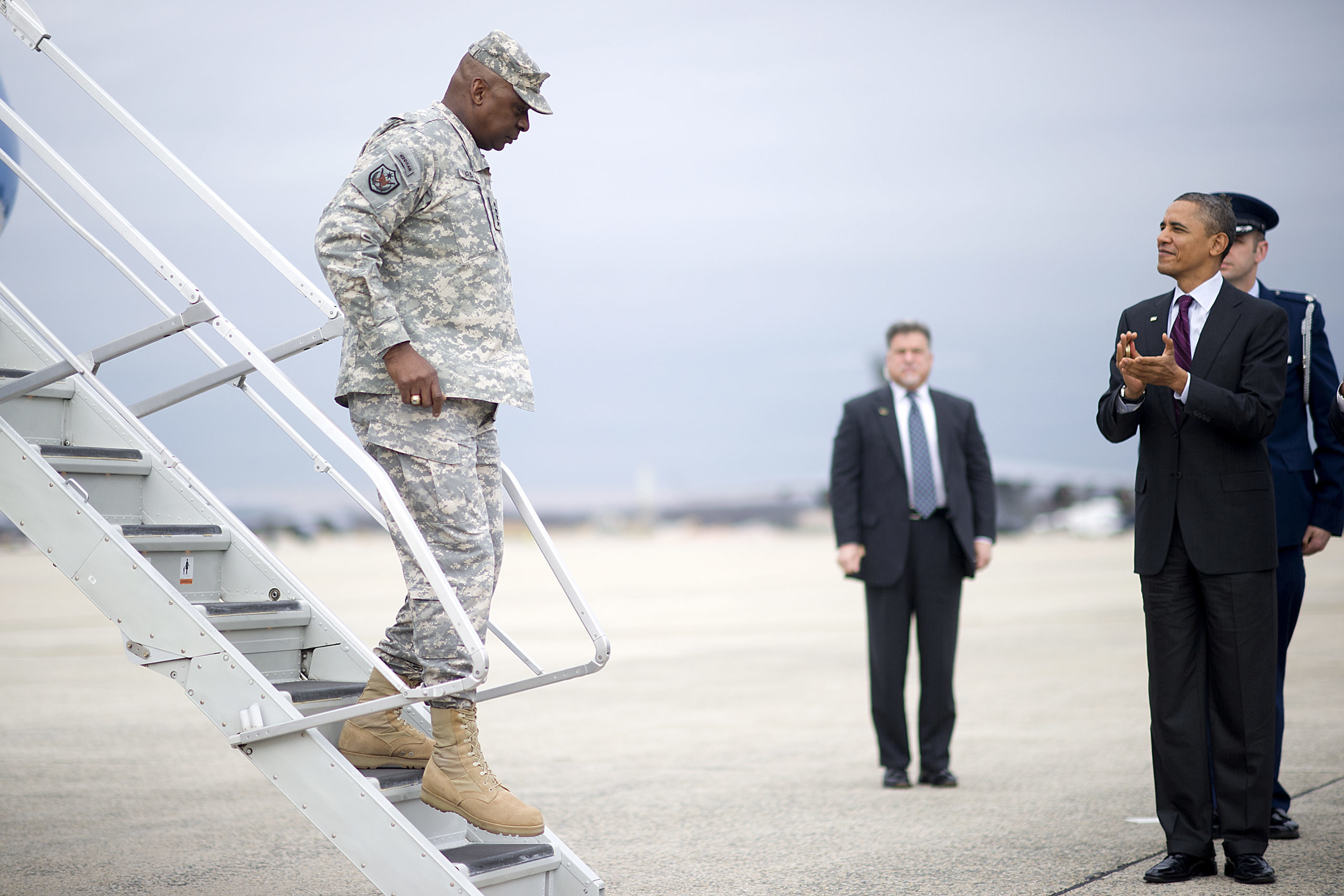Lloyd Austin isn’t who you think he is
It was in 2010, when General Lloyd Austin was head of U.S. Forces in Iraq, that he got to know then-Vice President Biden. Austin had already become friendly with Biden’s son Beau (they regularly attended Catholic services together in Iraq, where Beau Biden was also deployed, according to the Washington Post), but it was his unflappability in person that most impressed the vice president, according to a senior Pentagon official with contacts in the Biden transition team.
Ten years later, those encounters in Iraq were one factor in president-elect Biden’s decision to select Austin as his secretary of defense. Austin has powerful Biden allies and political supporters, including retired Gen. Stanley McChrystal, who retains the president-elect’s admiration despite the embarrassing critiques McChrystal’s staff made of Biden back in 2010. (McChrystal did not respond to the author’s invitation to comment on his relationship with Austin.) But most crucially, it’s clear that Biden and Austin share common beliefs, including a healthy skepticism about America’s serial Middle East interventions, a deep-seated belief in the efficacy of diplomacy, and a nearly instinctive commitment to rebuilding U.S. alliances. These are the foreign-policy ideas that helped secure the White House for Biden—but have not always been as popular with the military as with the American public.Trending Articles
Austin’s commitment to these themes is a testimony to the equanimity Biden first noticed in him in Iraq—and which was prominently reflected in a notorious disaster that could have curtailed Austin’s career before it started. On the afternoon of March 23, 1994, an F-16 Fighting Falcon collided with a C-130 Hercules troop transport over Pope Air Force Base in North Carolina. The C-130 was able to land safely, but the F-16 barreled into the parking ramp of Pope’s east-west runway, where two battalions—about 500 soldiers—of the 82nd Airborne Division were lined up on the airfield’s “green ramp” in preparation for a training mission. The resulting carnage was horrific: 23 paratroopers of the two battalions were killed, and more than 80 were injured. Many of the injured suffered life-threatening burns, and one died the following year. The commander of one of the battalions was then-Lt. Col. Stanley McChrystal; the commander of the other was then-Lt. Col. Lloyd Austin
The “green ramp disaster” was a searing experience for both McChrystal and Austin, who had attended West Point together—McChrystal graduated in 1976, Austin the year before—but had never been particularly close. In the tragedy’s aftermath, both commanders received high marks for reshaping units scarred by the disaster, but Austin’s work stood out, marking him for higher command. Forged by the tragedy, McChrystal and Austin followed dissimilar but parallel tracks to high command—with McChrystal’s meteoric rise resulting in a five-year stint at the head of the Joint Special Operations Command (and a controversial, all-too-public stint as the U.S. commander in Afghanistan), while Austin’s more prosaic arc resulted in steady if unspectacular promotions until he became assistant commander of the 3rd Infantry Division during Operation Iraqi Freedom.
Read the full article in Foreign Policy.
